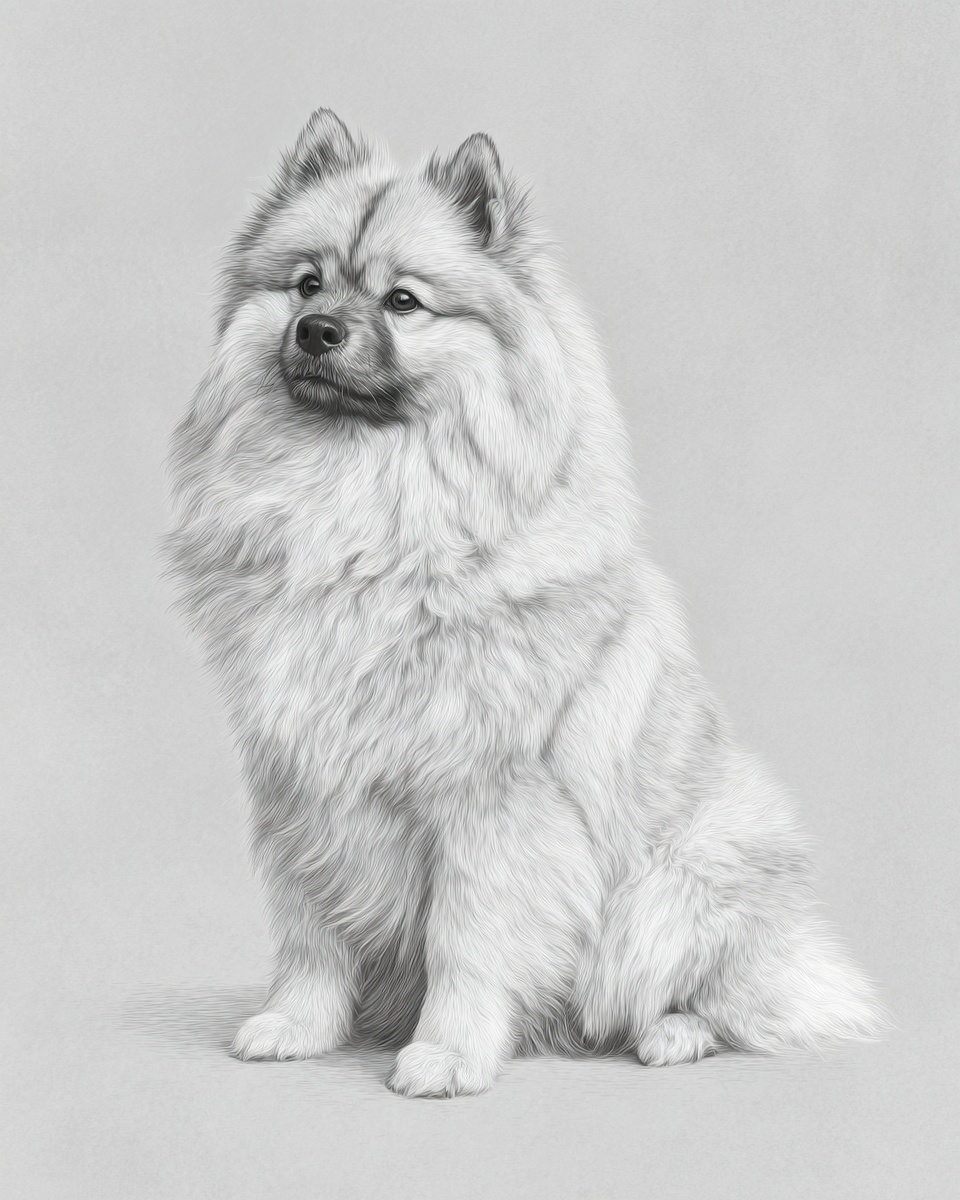Keeshond

Description
The Keeshond is a medium-sized Spitz breed with a thick double coat that gives it a plush, rounded appearance. Originating in the Netherlands, this breed was once a common sight on riverboats and farms, serving as a reliable watchdog. Its distinctive facial markings, often called "spectacles," frame expressive eyes that seem to communicate curiosity and alertness. Weighing between 35 and 45 pounds, the Keeshond carries itself with a sturdy yet graceful posture. Friendly and outgoing, Keeshonds thrive in family settings and are especially gentle with children. They tend to be reserved around strangers but rarely show aggression. Known for their vocal nature, they often "talk" to their owners, expressing needs or emotions clearly. While they enjoy moderate daily activity, they’re just as content curling up on the couch for quiet companionship.
Grooming
The Keeshond’s long double coat requires consistent care to stay healthy and mat-free. Daily line-brushing down to the skin using a pin brush and metal comb is essential to prevent tangles and mats, especially in humid weather when mats form more easily. Bathing every 4 to 6 weeks keeps the coat clean but make sure to dry thoroughly to avoid dampness that can cause skin issues. Pay special attention to trimming around the feet and sanitary areas between full grooming sessions to maintain neatness. - Brush daily with pin brush and metal comb - Bathe every 4–6 weeks, dry completely - Trim feet and sanitary areas regularly - Watch for mats in humid conditions - Moderate shedding twice yearly, increase brushing then Pro tip: Use a slicker brush during shedding season to catch loose undercoat before it mats.
Learn the Double routine:
→ Complete Double Grooming Guide
Walking
Keeshonds need about 55 minutes of walking daily, typically in one session. Their exercise needs are moderate, so a single, well-paced walk suits them best. They enjoy exploring but don’t require intense physical activity. Mental stimulation during walks, like practicing commands or sniffing, keeps them engaged without overexertion. Example routine: Morning: 10-minute leash walk with basic obedience Evening: 45-minute relaxed neighborhood stroll Keep walks calm and consistent to match their temperament.
Boarding
When boarding a Keeshond, a crate size between 36 and 42 inches is appropriate to allow comfortable movement and resting space. This breed prefers a calm environment with predictable routines to reduce stress. Staff should introduce themselves slowly and maintain a steady schedule to help the dog adjust. Daily exercise sessions should focus on calm decompression rather than vigorous play, reflecting the Keeshond’s moderate activity level. Enrichment can include gentle puzzle toys and quiet interaction rather than high-intensity games. Because they can be vocal, staff should be prepared to manage barking with patience and redirection. Providing a cozy, familiar blanket or toy in the crate can help ease separation anxiety during boarding stays.